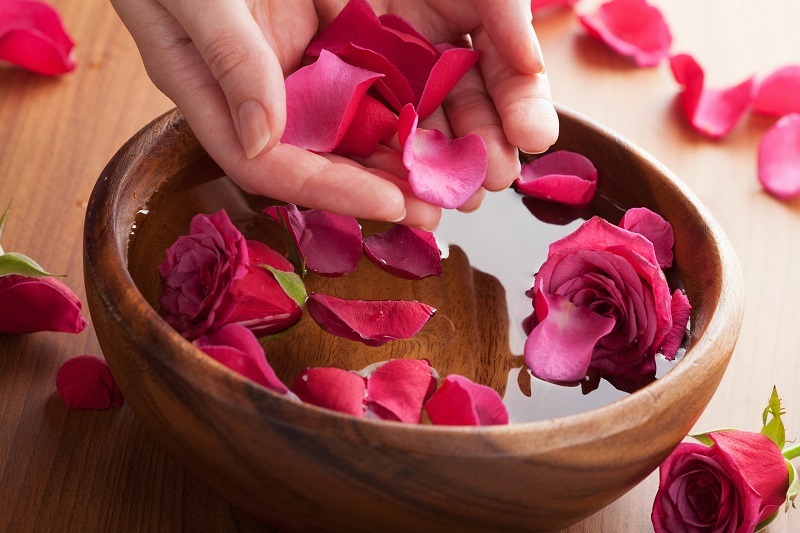Mastering the Art of Orchid Care
Posted on 07/06/2025
Mastering the Art of Orchid Care: A Comprehensive Guide for Enthusiasts
Orchids are among the most coveted and mysterious houseplants in the world. Their exotic blooms, intricate designs, and delicate fragrance transform spaces into living works of art. Yet, many people find orchid care intimidating and challenging. This guide is your key to mastering orchid care and ensuring your plants thrive. Whether you're a beginner or an experienced collector, read on to discover expert tips that will empower you to nurture your orchids with confidence.

Understanding Orchids: An Introduction to Their Unique Needs
Orchids belong to the Orchidaceae family, one of the largest and most diverse plant families on the planet. With over 25,000 species and more than 100,000 hybrids, orchids exhibit incredible variety. Their care requirements can differ significantly, but some foundational principles apply to most commonly grown varieties, such as Phalaenopsis, Cattleya, Dendrobium, and Oncidium.
- Epiphytes vs Terrestrials: Most cultivated orchids are epiphytes--they grow on trees rather than in soil.
- Adaptability: Orchids have adapted to various climates. Many prefer warm, humid habitats with good air circulation.
- Growth Patterns: Orchids grow slowly and have distinct blooming cycles. Patience is essential!
Common Misconceptions About Orchid Care
- Orchids are hard to grow: With the right care, most orchids are no more difficult than other houseplants.
- All orchids need the same care: Orchid care varies by species. It's crucial to know your plant's background.
- Frequent watering is necessary: Overwatering is a leading cause of orchid decline.
The Essentials of Orchid Care: Lighting, Water, and Humidity
Light Requirements for Orchids
Light is one of the most critical factors in orchid health. Most household orchids prefer bright, indirect sunlight. The ideal location is near an east- or west-facing window, filtered through sheer curtains. Too much direct sun can scorch leaves, while too little light inhibits bloom production.
- Phalaenopsis: Thrives in moderate, filtered light.
- Cattleya: Prefers brighter, indirect sunlight.
- Dendrobium and Oncidium: Require significant, filtered light to bloom.
Tip: If your orchid's leaves turn dark green, it may need more light. Yellowish-green leaves can mean too much sun.
Watering Orchids Without Fear
Watering is where many orchid enthusiasts go wrong. Unlike other houseplants, orchids need their roots to breathe. Overwatering suffocates roots and leads to root rot, while underwatering deprives the plant of essential moisture.
- Check the roots: Silvery-white roots mean the orchid is ready for water.
- Soak, don't drench: Water thoroughly, letting excess water drain away.
- Frequency: Water most orchids once every 7-10 days. Adjust based on humidity and temperature.
- Never let orchids sit in water!
Pro tip: Use room temperature rainwater or distilled water for optimal results.
Humidity: Crucial for Mastering Orchid Care
Orchids flourish in higher humidity levels, typically between 40% and 70%. Dry homes can make orchids suffer, especially during winter. Increase humidity with these methods:
- Grouping plants together to boost collective humidity.
- Using a humidity tray filled with water and pebbles under the pot.
- Misting orchids in the morning, allowing time for leaves to dry before nightfall.
- Running a humidifier nearby.
Potting Mediums, Containers, and Repotting
Choosing the Right Orchid Potting Mix
Orchids should never be kept in regular potting soil, as it suffocates the roots. The best orchid potting mixes include combinations of:
- Bark chips (fir, redwood, or pine)
- Sphagnum moss
- Coconut husk
- Perlite or charcoal for drainage
Each orchid type may prefer a different substrate. For example, Phalaenopsis orchids flourish in bark with some moss, while Dendrobiums often prefer coarser mixtures for increased air flow.
Selecting the Perfect Pot and Repotting
Transparent orchid pots are popular because they let light reach the roots and make it easy to monitor their health. Always ensure pots have plentiful drainage holes!
When to repot orchids:
- Every 1-2 years, or when the potting medium breaks down
- If roots are crowded or growing out of the pot
- After blooming (never during bloom unless absolutely necessary)
Repotting restores vital air flow and prevents diseases. Gently remove the orchid, trim dead roots, and refresh the medium. Avoid fertilizing for a few weeks to allow roots to recover.
Feeding and Fertilizing: Nourishing Orchids for Vigorous Growth
Choosing the Best Orchid Fertilizer
Orchids require balanced nutrition for optimal flowering and foliage. Choose a water-soluble fertilizer formulated explicitly for orchids, typically labeled as 20-20-20 or similar balanced ratios.
How to fertilize orchids:
- Feed "weakly, weekly": Dilute fertilizer to one-quarter or half strength and apply every 2-4 weeks during active growth.
- In winter, reduce feeding as growth slows.
- Flush pots with water monthly to prevent salt buildup.
Remember: Over-fertilizing can burn roots and inhibit blooming!
Problem Solving: Diagnosing and Treating Common Orchid Issues
Recognizing Orchid Pests
- Scale insects and mealybugs: Look for cottony clusters or bumps on leaves and stems.
- Spider mites: Fine webbing and stippled leaves.
- Aphids: Tiny, soft-bodied insects on new growth and flowers.
Treat mild infestations by wiping with mild soapy water or horticultural oil. For severe problems, isolate plants and consider specialized insecticides.
Disease Prevention
- Root rot: Prevent by avoiding overwatering and ensuring excellent drainage.
- Leaf Spots: Indicate fungal or bacterial problems, often from excess moisture on leaves. Remove affected leaves and improve air circulation.
- Botrytis: Gray mold on flowers, particularly in cool, damp conditions.
Prevention is always easier than cure! Maintain sanitary tools, remove dead plant material, and keep humidity in check to avoid most issues.
Encouraging Blooms: Secrets to Flowering Success
Tips to Trigger Reblooming in Orchids
Most orchid owners dream of seeing their plants flower year after year. Achieving repeat bloom cycles is the true test of expert orchid care. Here's how to encourage spectacular blossoms:
- Day/night temperature difference: Most orchids need nighttime temperatures 10-15?F lower than day temperatures to trigger blooming.
- Light: Ensure ample, indirect light. Insufficient light is a top reason for lack of flowers.
- Rest period: After blooming, some orchids need a dry or cool rest period. Research your plant's needs.
- Balanced nutrition: Do not overfertilize. High phosphorus content in bloom boosters can encourage spikes in certain orchids.
Orchid Flower Spike Aftercare
After flowering, cut the spike back just above a node to encourage a new spike on some orchids (notably Phalaenopsis). With others, wait until the spike dies back naturally and only then remove it. Clean cuts prevent infections!
Advanced Orchid Care: Species-Specific Tips
Phalaenopsis (Moth Orchids)
- Maintain high humidity, moderate light, and water every 7-10 days.
- After blooming, cut the spike above the third node to encourage new flowers.
Cattleya Orchids
- Require bright, filtered light for at least 4-5 hours per day.
- Water only when medium is dry; avoid wetting leaves to reduce fungus risk.
Dendrobium and Oncidium Orchids
- Love fresh air and bright, indirect sunlight.
- Let the pot dry between waterings--overwatering is especially harmful to Dendrobiums.
Creating an Orchid-Friendly Environment at Home
For ultimate success, create a home environment that mimics your orchid's natural habitat:
- Stable temperatures between 65-80?F during the day, a slight drop at night.
- Consistent humidity using trays, misting, or humidifiers.
- Filtered light without scorching midday sun.
- Good air movement with open windows or small fans (never directly on plants).
Remember: Orchids prefer gentle changes rather than sudden environmental swings.
Orchid Care Throughout the Seasons
Spring/Summer
- Growth period--feed, water, and increase humidity as needed.
- Shield from harsh midday sun to prevent leaf burn.
Autumn/Winter
- Cut back on watering and fertilizer as growth slows.
- Monitor humidity--heat sources can dry the air dramatically.
- Watch for temperature drops if orchids are near windowsills.

Frequently Asked Questions About Growing Orchids
How often should I water my orchid?
Most orchids need watering every 7-10 days, but the frequency depends on light, temperature, humidity, and potting medium. Always check the roots and potting mix before watering.
Why won't my orchid bloom?
Causes include insufficient light, too much nitrogen fertilizer, or lack of a cool temperature dip at night. Research your orchid's specific needs and adjust accordingly.
Can I grow orchids in the bathroom?
Many orchids, especially Phalaenopsis, thrive in bathrooms due to higher humidity and consistent warmth--just ensure they receive indirect light!
The Joy of Mastering Orchid Care
Successfully nurturing an orchid from leafy growth to vibrant bloom is an immensely satisfying accomplishment. With the expert guidance above, you're well on your way to mastering orchid care. Remember--patience, attention, and gentle tweaks to your environment are the keys to cultivating thriving, beautiful orchids at home.
Ready to elevate your orchid game? Start by evaluating your current care routines. Incorporate one or two new strategies at a time, monitor your plant's response, and soon you'll enjoy robust, long-lasting flowers year after year. Happy growing!
Latest Posts
Prolong the Beauty of Your Cut Flowers
Extend the Beauty of Your Poinsettias with These Tips
Unveiling the Mysterious Side of Sunflowers





